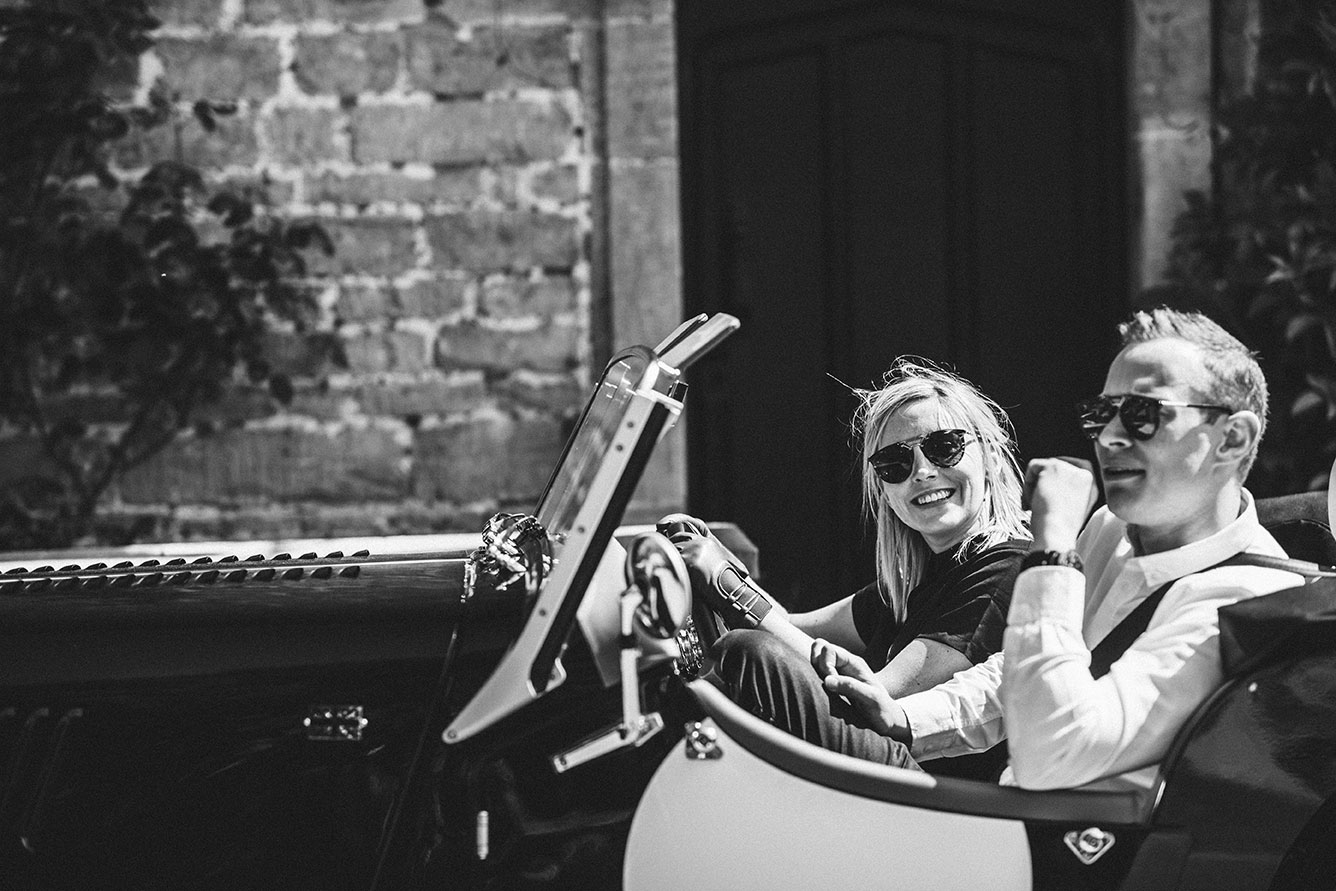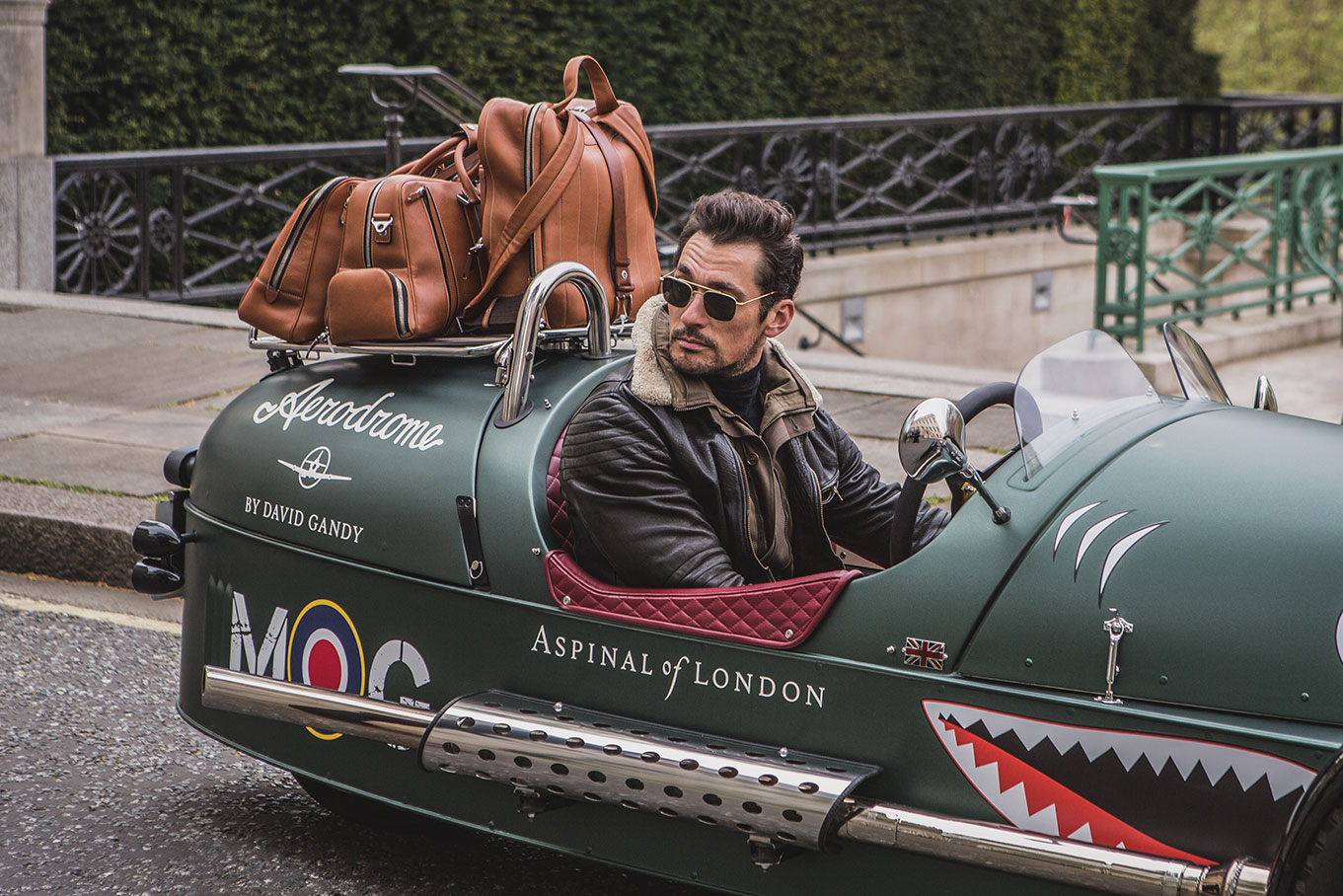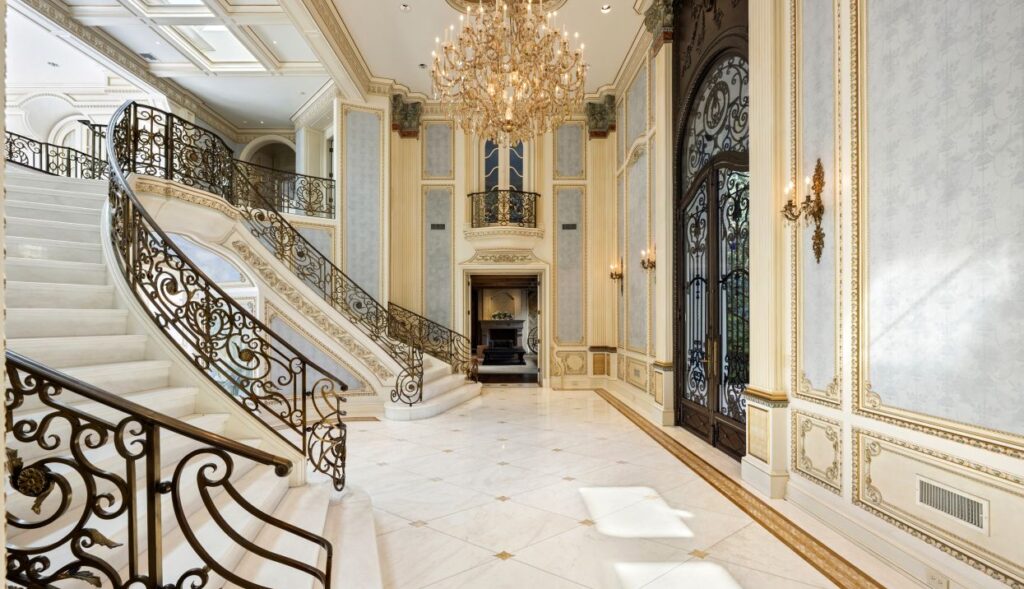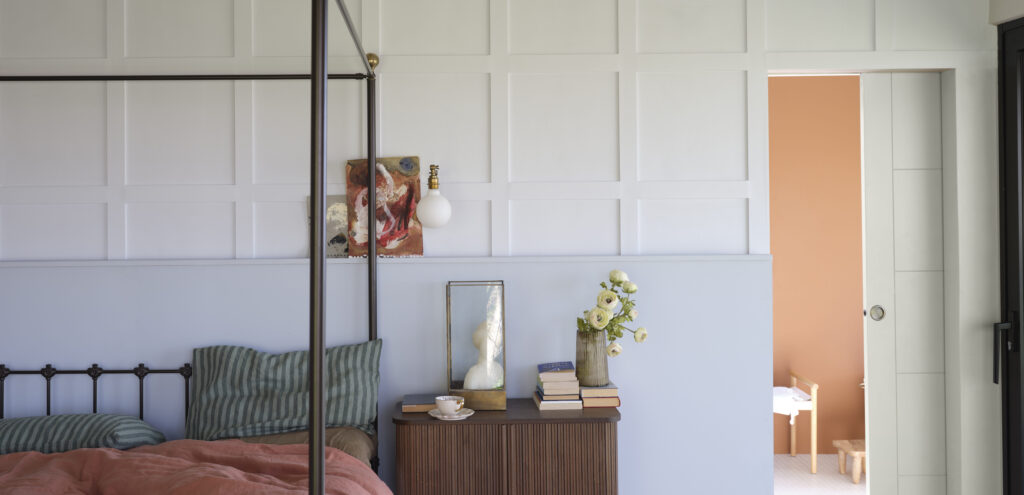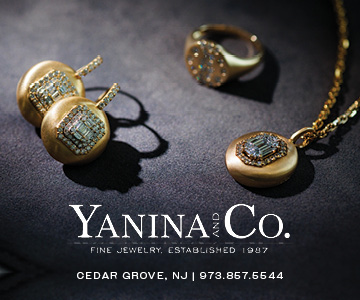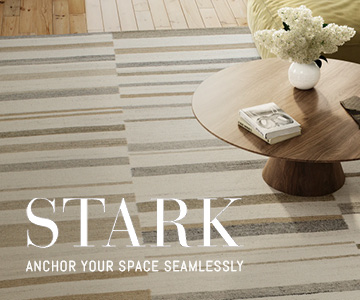After the end of Jerry Seinfeld’s hit NBC sitcom, he made his return to the entertainment industry as an automotive enthusiast in his web series-turned-Netflix show “Comedians in Cars Getting Coffee.” During a 2015 episode starring Stephen Colbert, Seinfeld picks up “The Late Show” host from his Montclair, NJ home in a brilliant blue 1964 Morgan Plus 4. He explains that he chose the sports car based on the similarities it bares to Colbert—namely they’re both conventional-looking on the outside, but deep down, quite the character. Seinfeld goes on to say that what he finds so admirable about Morgan Motor Company is that they simply don’t care what other brands are doing. They’re quintessentially British, and their cars are so undeniably cool that you’ll want to put on your best pair of leather driving gloves and tweed jacket before getting behind the wheel.
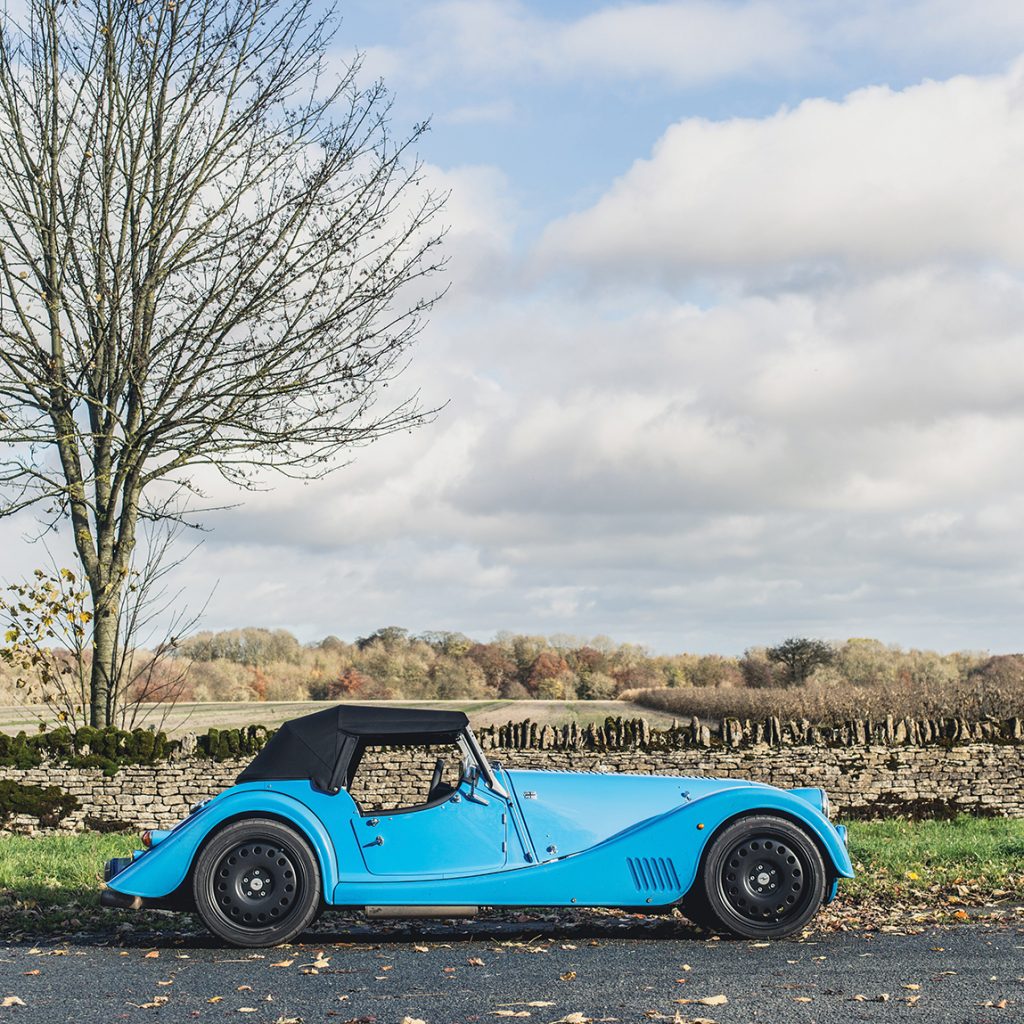 Since the founding of Morgan Motor Company in 1909, the company has never changed its formula. To this day, each car is crafted in a western England factory using the same core components—ash wood, aluminium and leather—three materials the Morgan team decided on over a century ago, yet defy the rules of modern day carmaking. Morgan stands as one of the longest running car manufacturers in all of Britain and continues to rise to the top of an industry that’s largely dominated by exotic sports and luxury automobile producers.
Since the founding of Morgan Motor Company in 1909, the company has never changed its formula. To this day, each car is crafted in a western England factory using the same core components—ash wood, aluminium and leather—three materials the Morgan team decided on over a century ago, yet defy the rules of modern day carmaking. Morgan stands as one of the longest running car manufacturers in all of Britain and continues to rise to the top of an industry that’s largely dominated by exotic sports and luxury automobile producers.
Beyond aesthetics, the appeal stems from the fact that all Morgan cars are made by hand—with no machines or computers in sight. The wood is sawn and bent and the framework is dipped in preservatives to ensure its durability against the elements. The aluminum panels are then hand-beaten into shape, painted and the leather trim is added to the cockpit which takes workers over 30 hours to complete (and a 4 week process overall). What may seem like an old-fashioned style of operation is actually rooted in science. Not only is ash lightweight, it’s durable, flexible and more environmentally-conscious. That being said, driving a Morgan is an experience that will transport you back in time.
The three generations behind Morgan Motors begins with Henry Fredrick Stanley “H.F.S.” Morgan, whose innovative single-seat, three-wheeler prototype became the company’s most iconic design. In the early days of motoring, the Runabout (as it was called) was considered one of the most successful lightweight cars of its time—outfitting a motorcycle engine and simple transmission into a light-weight chassis, also known as the “Cyclecar.”
Initially, H.F.S. intended the Runabout be for personal use, but after receiving assistance from an engineering master at Malvern College, he felt encouraged to put the car into production. It was later revealed for the first time to the public in 1910 at the Olympia motorcycle show in London. The very next year, he unveiled a two-seat Runabout with wheel steering and a hood. This would spark major commercial interest, including attention from the managing director of Harrods. The two-seat Runabout remains the only car to ever appear in the shop window of the famous store.
What brought the brand its biggest success at that time, however, was when the Morgan family began racing the Runabout in cyclecar competitions throughout Europe. By 1913, the Runabout had gained more awards for reliability and speed than any other car of its kind—including those with four wheels. Its most significant victory came when W.G. McMinnies, the editor of the “Cyclecar” magazine, raced in and won the International Cyclecar Grand Prix at Amiens in France. This led to a new Morgan model called the “Grand Prix,” and due to the increase in demand, forced the company to move their factory to a location with more land. The plot on Pickersleigh Road still remains as the site of the present-day factory, just a quarter of a mile away from the Morgan’s original workshop.
From the introduction of its first car in 1909, Morgan Motors went on to produce a four-seater family Runabout in 1921 and the Morgan 4/4 in 1936, which indicated it had four wheels and four cylinders. The public would later see iterations of the 4/4 including the four-seater and Drophead coupé. The Morgan 4/4 is still in production today, holding the world record for the longest production run of any vehicle model.
After the passing of H.F.S. in 1959, his son, Peter Morgan, took over the company and continued the brand’s legacy. The Morgan Plus 4 SuperSports would earn a first-in-class trophy at Le Mans in 1962, and they introduced the Morgan Plus 8 four years later—powered by an aluminium Rover 3.5-litre V8 engine, and believed to be the fastest-accelerating car of that time. A bright yellow Morgan Plus 8 was most notably driven by musician and Rolling Stones frontman Mick Jagger in the late 1960s.
The Plus 8 is also the very same car that’s gracing the cover of VUE’s fall issue. In a striking blue color that resembles the original 1968 model, it’s outfitted with an identical factory-owned MMC 11 license plate which is reserved for only the most special Morgan cars. They introduced the new Plus 8 in November 2018, announcing that it would be the last (and 300th) aluminium chassis Plus 8 to ever be built. The iconic car will be inducted into the Morgan heritage fleet as an homage to its 50 years of production.
Morgan Motors would see its biggest change in over half a century in the late ‘90s. Under the control of Charles Morgan, grandson to H.F.S., the company began to develop an entirely new type of design known as the Aero 8. With the help of Chris Lawrence, who was the winning driver in the aforementioned 1962 Le Mans race, the Aero 8 would have the first-ever chassis made from aluminum, composites and bonding technology—yet still keeping its wooden tub. After a five-year development and testing period, Morgan Motors brought the Aero 8 to the public in 2000. But following the footsteps of the Plus 8, it retired in 2018 and is considered part of the Morgan heritage fleet.
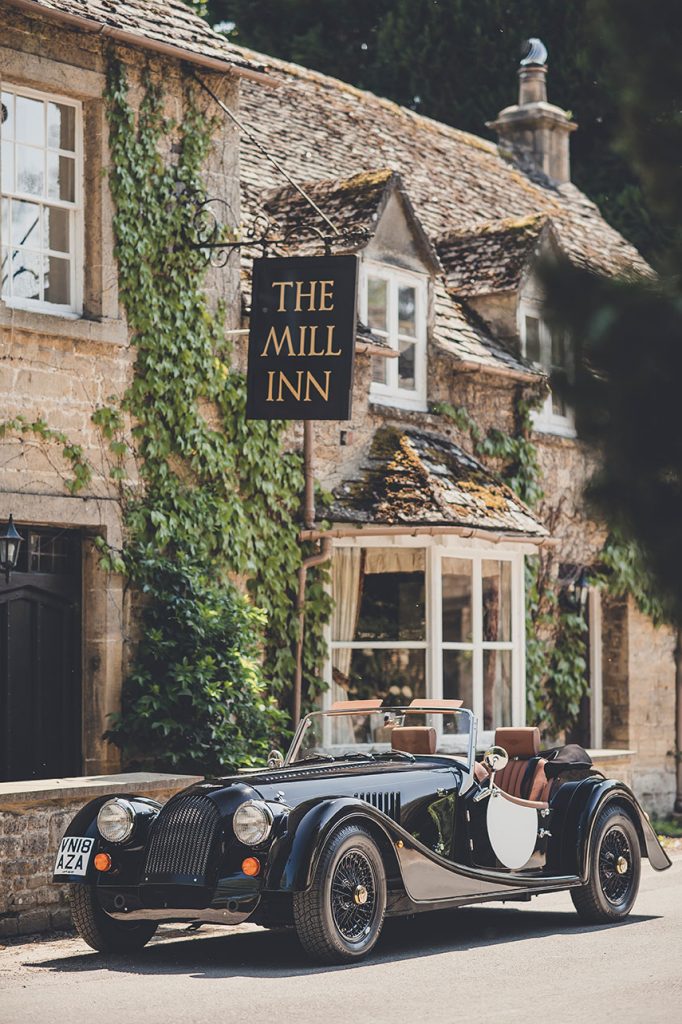 Despite their remarkable ability to stay true to tradition, Morgan hasn’t fallen behind in the 21st century. The company has adapted to include clean, energy-efficient offerings including the concept project LIFECar. While the body and chassis keep to the Morgan identity, the car itself is powered via advanced hydrogen cells and four electric-motor generators that can achieve the equivalent of 150 m.p.g. Morgan brought more “green” vehicles to the market shortly after including the Aeromax and limited-edition Aero SuperSports.
Despite their remarkable ability to stay true to tradition, Morgan hasn’t fallen behind in the 21st century. The company has adapted to include clean, energy-efficient offerings including the concept project LIFECar. While the body and chassis keep to the Morgan identity, the car itself is powered via advanced hydrogen cells and four electric-motor generators that can achieve the equivalent of 150 m.p.g. Morgan brought more “green” vehicles to the market shortly after including the Aeromax and limited-edition Aero SuperSports.
Most recently in 2019, the company debuted the Plus Six—the first Morgan to have a turbocharged engine. It’s said to be faster than the Plus 8 model with a 4.2-second zero-to-62-mph time. The Plus Six marks a new era for Morgan Motors as part of their CX-Generation platform, which the team boasts has a “100 percent increase in torsional rigidity and a range of benefits at no extra weight penalty.” The Plus Six also includes an array of modern amenities never seen before in a Morgan car such as automatic headlights, air vents in the dashboard and a digital display screen.
While the Morgan family is still very much a part of the company today, 2019 would also be the year that majority ownership would be handed over to Investindustrial. The partnership came as an effort to secure the brand’s financial future and maintain their success in the automotive world. The family continues to act as stewards for the company, making sure that the Morgan heritage remains at the heart of all their vehicles.
*Although based in England, you can visit the nearest Morgan Motors dealership in Copake, NY.

